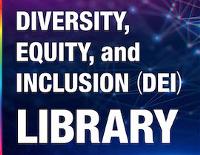Diversity, Equity, & Inclusion Curriculum
Home
/
About SAEM
/
Academies, Interest Groups, & Affiliates
/
ADIEM
/
Resources
/
DEI Resource Library
/
Diversity, Equity, & Inclusion Curriculum

Introducing the
SAEM Diversity, Equity, and Inclusion (DEI) Curriculum
Starting the DEI Conversation without Starting from Scratch
An SAEM ADIEM and Equity and Inclusion Committee Project
Key Concepts |
| DEI - each term definition |
| Bias: Implicit v. Explicit V Discrimination |
| Privilege |
| Microaggressions |
| Allyship/Upstander/Bystander |
Specific Groups |
| Ableism |
| Anti-racism |
| Sex and Gender Minority |
| Intersectionality |
Strategies & Tools |
| Diversity Snowball Effect |
| Dealing with Racist or Bigoted Patients and Colleagues |
| Mentorship/Sponsorship/Advocacy: Promotion |
| Recruitment and Retention |
| Identity-First Language |
Understanding Burdens on URiM |
| Minority Tax, Gratitude Tax, Emotional Tax |
| Imposter Syndrome |
| Belonging |
| Code switching |
| Gaslighting |
| History/Structural Racism |
Articles
- “I don't want to be the squeaky wheel”: Addressing bias as a leader in emergency medicine Implicit bias poses a barrier to inclusivity in the health care workforce and is detrimental to patient care. While previous studies have investigated knowledge and training gaps related to implicit bias, emergency medicine (EM) leaders' self-awareness and perspectives on bias have not been studied.
- Measuring Medical Students’ Inclusive Care for Sexual and Gender Minority Patients It is essential to evaluate the impact of this education on medical students’ clinical skills. A recent review found that only 1 of 36 evaluations of programs training medical students to provide affirming and inclusive care included a direct measurement of learner skills.
- Effect of a Workshop to Break the Bias Habit for Internal Medicine Faculty: A Multisite Cluster Randomized Controlled Study Purpose Recognition that cultural stereotypes can unintentionally perpetuate inequities throughout academic medicine has led to calls for “implicit bias training” without strong evidence to support these recommendations and some evidence of potential harm.
- On the importance of professional resistance When physicians encounter systemic injustice and moral harm in their learning and clinical environments, they can either accept the system as it is and accommodate it,
- Using Simulation to Teach Learners in Health Care Behavioral Skills Related to Diversity, Equity, and Inclusion Bias is commonplace in the health care environment and can negatively impact patients and their health outcomes.
- Affirmative Action Ruled Unconstitutional Options for Building a Diverse Health Care Workforce On June 29, 2023, the Supreme Court of the United States decided Students for Fair Admissions, Inc v President and Fellows of Harvard College. In so doing, the Court held that “Harvard’s and UNC’s [University of North Carolina’s] admissions programs violate the Equal Protection Clause of the Fourteenth Amendment.
- The Supreme Court Decision on Affirmative Action—Fewer Black Physicians and More Health Disparities for Minoritized Groups The US Supreme Court’s June 29, 2023, ruling on Students for Fair Admissions, Inc v University of North Carolina and the paired case against Harvard overturned nearly 50 years of the use of affirmative action in higher education to address the inequities of systematic racism in the US.
- Inadequacy of Current Screening Measures for Health-Related Social Needs In 2022, the Centers for Medicare & Medicaid Services (CMS), along with standard-setting organizations such as the National Committee for Quality Assurance (NCQA) and The Joint Commission, established new quality measures aimed at promoting health equity.
- How the SCOTUS Affirmative Action Ruling Could Affect Medical Schools and Health Care A recent study found that most US adults—about 60%—who have a physician they see regularly reported trusting that person.
- Countering the Health Disinformation Machine When extremists home in on a Harvard Medical School course on caring for patients with diverse sexual orientations, gender identities, and sex development, its director receives a crash course on the health disinformation machine.
- Affirmative Action, Population Health, and the Importance of Opportunity and Hope Policy discussions related to affirmative action have typically focused on its effects on education, employment, and earnings. But affirmative action may also play a role in shaping population health.
- The Supreme Court and the Importance of Diversity in Medicine The Supreme Court’s decisions in two cases eliminate the consideration of race in university admissions. Regardless of the rulings, medical education can sustain efforts supporting diversity.
- Sexual and Gender Minority Refugees — Preparing Clinicians for the International Anti-LGBTQI+ Crisis As refugees and asylum seekers, including LGBTQI+ persons, interact with health care systems, clinicians should be prepared to assess and address their health and legal needs.
- A quality improvement approach to integrating social determinants of health objectives into pediatric simulation Health disparities and the unequal distribution of social resources impact health outcomes. By considering social determinants of health (SDH), clinicians can provide holistic and equitable care.
- Exploring cultural sensitivity during distance simulations in pediatric emergency medicine Cultural sensitivity (CS) training is vital to pediatric emergency medicine (PEM) curricula. This study aimed to explore CS in Yale PEM fellows and emergency medicine (EM) residents at Indus Hospital and Health Network (IHHN) in Pakistan through distance simulation activities.
- Simulation for diversity, equity and inclusion in emergency medicine residency training: A qualitative study The last few years have seen an increased focus on diversity, equity, and inclusion (DEI) initiatives across organizations. Simulation has been used in varying degrees for teaching about DEI topics with emergency medicine; however, there are no established best practices or guidelines on this subject.
- Examining trends in emergency medicine journals' publications about racism In recent years, the academic medicine community has produced numerous statements and calls to action condemning racism. Though health equity work examining health disparities has expanded, few studies specifically name racism as an operational construct.
- Reflecting on Progress in and Establishing Benchmarks for Sex and Gender Health Education Sex and gender influence every aspect of human health; thus, sex- and gender-related topics should be incorporated in all aspects of health education curricula
- Upholding Our PROMISE: Underrepresented in Medicine Pediatric Residents' Perspectives on Interventions to Promote Belonging Underrepresented in medicine (UIM) residents experience challenges during training that threaten their sense of belonging in medicine; therefore, residency programs should intentionally implement interventions to promote belonging.
- Designing a Road Map for Action to Address Bias and Racism Within a Large Academic Medical Center. The authors describe the Road Map for Action to Address Racism, which was developed to unify and systematize antiracism efforts across the Mount Sinai Health System.
- Truth and Reconciliation in Medical Schools: Forging a Critical Reflective Framework to Advance Indigenous Health Equity In 2015, the Truth and Reconciliation Commission (TRC) of Canada outlined 94 Calls to Action, which formalized a responsibility for all people and institutions in Canada to confront and craft paths to remedy the legacy of the country’s colonial past. Among other things, these Calls to Action challenge medical schools to examine and improve existing strategies and capacities for improving Indigenous health outcomes within the areas of education, research, and clinical service.
- Promoting Sexual and Gender Minority Health Clinical Skills Training for All Medical Students Despite societal, legal, and cultural improvements in their well-being, sexual and gender minority (SGM) people in the United States still face substantial physical and mental health disparities that are exacerbated by physician stigma and lack of training.
- Structural Competency: Curriculum for Medical Students, Residents, and Interprofessional Teams on the Structural Factors That Produce Health Disparities
Research on disparities in health and health care has demonstrated that social, economic, and political factors are key drivers of poor health outcomes. Yet the role of such structural forces on health and health care has been incorporated
unevenly into medical training. The framework of structural competency offers a paradigm for training health professionals to recognize and respond to the impact of upstream, structural factors on patient health and health care.
Books
- The Practice of Honoring Diversity by Lee Mun Wah. The Practice of Honoring Diversity are techniques on how to help agencies and companies integrate diversity into their meetings and institutions. Each of these practices were developed to encourage a more open dialogue where different groups could feel acknowledged, validated, and valued for their diverse cultural and gender perspectives.









